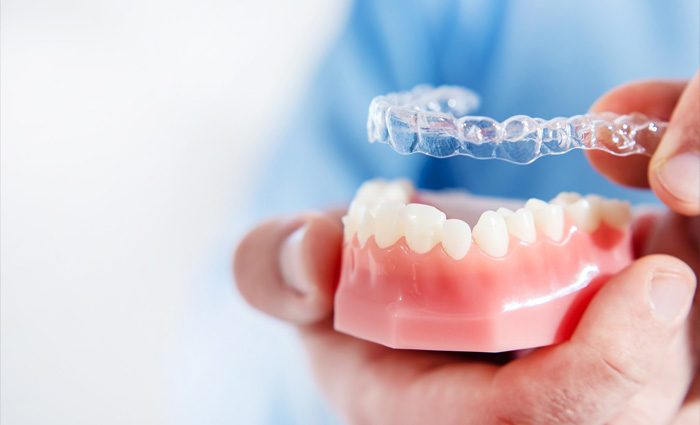Dental crowns improve the smile’s appearance by hiding all the cosmetic defects. By placing a crown, teeth that are stained, discolored, or misshapen can be transformed completely to achieve a more natural and appealing look.
What Is a Dental Crown?
Crowns are a type of dental prosthesis that is placed on a damaged or weakened tooth or on top of an implant to replace a missing tooth.
Why Do Teeth Need Crowns?
A tooth that no longer can perform its normal chewing function due to damages such as a fracture, cavity, or severe wear and tear may require a crown for protection.
A dentist may suggest you opt for a dental crown for various reasons, including:
- Securing a dental bridge
- Protecting a dental implant
- Covering a tooth covered with a filling
- Protecting a damaged or decayed tooth
- Covering a discolored or misshapen tooth
- Covering a tooth after a root canal procedure
What Are Crowns Made From?
Dental crowns are fabricated from a variety of materials, like resins, porcelains, zirconia, or a combination of these. In the past, these caps were made mostly of metal with added tooth-colored ceramic coating to make them look nice. These ceramic coatings have the tendency to chip over time due to forces imposed while chewing. This not only affects the aesthetics of the teeth by exposing the metal underneath but also alters the height of the crown, thus interfering with normal chewing ability. Additionally, these crowns require more grinding down of the natural tooth structure and may cause sensitivity in nearby natural teeth by wearing off enamel. These disadvantages have led to a preference for zirconia crowns as an alternative to porcelain-fused-to-metal (PFM) crowns.
Benefits associated with zirconium crowns include:
- They are highly biocompatible.
- They offer remarkably great strength.
- They are tooth-colored and can be obtained in different shades.
- They are stronger even at a minimum thickness of 0.5 mm, so a natural tooth is filed to a much lesser extent when compared to PFM crowns.
- They have a very little impact on the opposing teeth.
The Dental Crown Procedure
Dental crown placement usually requires two appointments. During the initial visit, the tooth is reduced to create space for the crown. An impression is made and sent to the laboratory for fabrication of final crown. Using this impression, a crown is fabricated in the dental laboratory. In the meantime, a temporary crown is provided.
During the second visit, the temporary crown is removed, and the shape, color, and fit of the new crown are checked. Once everything is confirmed, the new crown is cemented onto the prepared tooth using resin cement. Any necessary adjustments to the bite will be made to ensure the crown feels comfortable.
Tips to Maintain Your Crown or Bridge
Once your crown is placed and feels comfortable in your mouth, it is very important to observe optimal oral hygiene. Brush your teeth twice a day using a soft-bristle toothbrush and fluoride toothpaste. In addition to this, make sure you clean between your teeth every day with floss or another interdental device, focusing on the area between the crown and the surrounding teeth. You need to understand that crowns are still susceptible to wear and tear. Therefore, it is advisable to avoid consuming extremely hard, crunchy, chewy, or sticky foods.
Common Problems With Crowns
The main purpose of a dental crown is to protect and repair the tooth, restoring it to its original form and function. Traditional crowns are designed to last anywhere from 5 to over 20 years; however, you might encounter crown issues. If you notice any dental issues, contact your dentist immediately to prevent any further damage. Common crown problems include:
- Tooth decay
- Poor crown placement
- Implant failure
- Sensitive teeth
- Damaged crowns (cracks, breaks, fractures)
- Nerve trauma
- Allergic reactions
- Greyed gums
References
- Crowns. Oral Health Foundation. https://www.dentalhealth.org/crowns. Accessed on 05 June 2024.
- Dental Crowns. Cleveland Clinic. https://my.clevelandclinic.org/health/treatments/10923-dental-crowns. Accessed on 05 June 2024.
- Soleimani, F., Jalali, H., Mostafavi, A. S., Zeighami, S., & Memarian, M. (2020). Retention and Clinical Performance of Zirconia Crowns: A Comprehensive Review. International journal of dentistry, 2020, 8846534. https://www.ncbi.nlm.nih.gov/pmc/articles/PMC7584951/ . Accessed on 05 June 2024.








